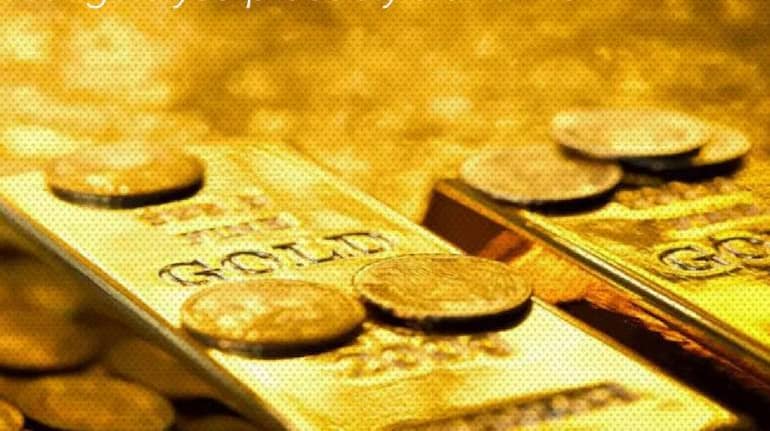



The yellow metal is on fire. Gold futures traded at a new high of Rs 57,125 per 10 grams on the MCX. In international markets, gold has crossed the important psychological mark of $1,900 per ounce. The recovery in international prices of gold since November 2022, along with a weak Rupee in last one year, have ensured that Indian portfolios with an allocation towards gold have done well. Does that mean you should invest more in the ultimate currency?
Riding the gold rushIn the three months that ended January 24, 2023, exchange-traded funds (ETF) investing in gold and silver saw gains of 15.25 percent and 22.76 percent, respectively. The quick move ensured that placid movement in precious metals in the second and third quarter of CY2022 were forgotten. However, investors are advised to revisit the movement of gold in years prior.
Gold hit a high of $2,070 per ounce in March 2022, in the aftermath of the Russian invasion of Ukraine. But the subsequent announcement of a series of aggressive rate hikes by the US Federal Reserve (the Fed) brought gold prices under pressure. When interest rates are hiked and investors get a positive real rate of return (where the nominal interest rate is higher than the rate of inflation), gold prices go down. A stronger Dollar due to capital flows from emerging markets also worked against gold. No wonder, those who bought gold at above $2,000 are yet to see their purchase price.
Something similar was seen when gold hit $2,070 in August 2020, when everyone was worried about the impact of the pandemic on the economic situation worldwide. Gold took almost 18 months to reach those prices again in March 2022, thanks to the fiscal and monetary policy response of policymakers worldwide to revive economic growth.
Whatever be the reasons for such wild price movements, there is a lesson to be learnt – returns from gold are not linear and if you land on the wrong side, then gold may make you wait for months.
Vijai Mantri, Chief Mentor and Co-Founder, Jeevantika says, “Do not chase gold looking at past returns. It does not pay any interest and if prices go down after your purchase, it may take much longer to bounce back to your purchase price than you can imagine.”
A golden 2023Though gold is a volatile asset, many analysts are of the opinion that prices may continue to go up for some time now. The winds are changing in favour of gold. While geo-political tensions are here to stay, the fear of recession and resultant volatility in risky assets such as equities should ensure that the safe-haven demand for gold will remain robust. If interest rates are not hiked much further and inflation plateaus, then there is a strong case for gold prices to go up further.
“Change in the Fed’s aggressive rate hike stance, positive flows in ETF (exchange-traded funds), and central bank purchases of gold should boost sentiment and lift gold prices,” says Navneet Damani, Head of Research, Commodities & Currencies, Motilal Oswal Financial Services. He expects gold prices to touch Rs 60,000-63,000 per 10 gram in CY2023.
He is not alone. Anuj Gupta, Vice-President, Research, Commodity and Currency, IIFL Securities, foresee gold touching Rs 58,000-Rs 60,000 per 10 gram in CY2023.
How should you invest?Even if gold looks good, going by past records, it may not be a one-way journey. Gold may see some profit-taking by early investors. Damani expects such profit booking in the first quarter, which may push gold prices down to Rs.53,500. “It can be a long-term buying opportunity,” he said.
Not many retail investors are savvy enough to keep track of gold. They are better off investing in line with their asset allocation and in a staggered manner. Rupesh Nagda, Founder and MD, of Family First Capital, recommends investing up to 15 percent of the portfolio in gold through gold ETF and gold funds.
Multi-asset funds investing in a mix of stocks, bonds, and gold work well for small investors. These schemes allocate money to these asset classes based on their relative attractiveness and rebalance from time to time.
Also read: Aditya Birla MF’s multi-asset fund offers diversification in a single fund: Should you invest?“Only long-term investors in gold should consider investing in sovereign gold bonds. Since these bonds rarely trade near fair value, they should not be used for tactical allocation. Tactical allocation to gold can be achieved using gold funds and gold ETFs,” says Nagda.
Most Indian investors do have an allocation toward gold. Do check your existing allocation towards the metal, and if you are short of the desired level, then raise your allocation in a staggered manner.
This is expected to be a tough year for stocks, since the economic slowdown in many parts of the world may suppress corporate earnings. This may lead to a situation that your allocation towards gold may go up, while equities may come down. When markets are volatile, you should review your portfolio carefully.
“Though this year gold is expected to do better than equities, investors keen to build a long-term portfolio should focus on accumulating equities per their permissible asset allocation,” said Mantri.
Let your asset allocation dictate your investments, not the short-term performance of asset classes.
Discover the latest Business News, Sensex, and Nifty updates. Obtain Personal Finance insights, tax queries, and expert opinions on Moneycontrol or download the Moneycontrol App to stay updated!
Find the best of Al News in one place, specially curated for you every weekend.
Stay on top of the latest tech trends and biggest startup news.